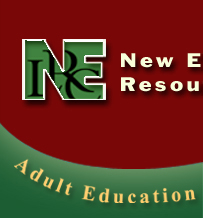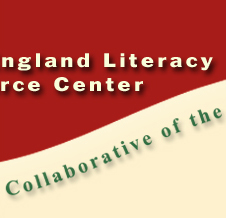
Values-Based Adult Education: Peace Circles
Program:
Roca Community Literacy and Leadership Project (CLLP)
101 Park Street, Chelsea, Massachusetts 02150
Tel. 617-889-5210
Fax 617-889-2145
www.rocainc.org
Mission
Established in 1988, Roca’s mission is to promote justice through creating opportunities for young people and older adults to lead happy and healthy lives. Roca’s work is guided by four core values: belonging, generosity, competence, and independence.
Services
Roca is a community-based, multi-cultural organization working primarily with young people between the ages of 12 and 26 who have been marginalized by society - those who are street youth, gang involved, pregnant or parenting, living in communities of violence, low income, disabled, ethnic and sexual minorities, adjudicated, system involved or of immigrant families. Roca’s adult education program, called Community Literacy and Leadership Project (CLLP), serves about 250 young adults and adults a year through 10 classes: three ESOL classes, GED in English and in Spanish, Spanish literacy, and two levels of computer classes. A special Padres Unidos/Parents United ESOL class focuses explicitly on parent leadership and involvement and civic participation. There is free on-site childcare, a myriad of programs for youth, and an on-site health clinic in collaboration with the Massachusetts General Hospital. CLLP takes advantage of Roca’s other young adult development programs with young parents, street involved youth, and drop-outs through referrals and additional support services. Additionally, CLLP is working with Roca’s emerging transitional employment and job placement/retention support programming. The CLLP collaborates with Bunker Hill Community College where students from the highest ESOL level are referred to continue their studies.
Rationale and Background of the Practice
Peace circles draw directly from the tradition of the talking circle, common even today among indigenous people of North America. A systemic effort to use peace circles in mainstream public processes such as criminal justice is relatively new, growing out of the work of the Tagish-Tlingit First Nation of the Yukon Territory in Canada. Although peace circles began as a part of the criminal justice process, the approach has been adopted by educational and human service organizations and others interested in alternative processes for conflict resolution, decision making, community building, healing and support. The peace circles offer an alternative to contemporary meeting processes that often rely on hierarchy, win-lose positioning, and victim/rescuer approaches to relationships and problem solving. The goal is to promote healing, harmony and a sense of connectedness.
The concept of a peace circle draws on the Native or First People’s concept of the medicine wheel. The medicine wheel reflects natural phenomena that occur in fours; for example, seasons, phases of the moon, and stages of life. The peace circle aims to promote a balanced approach to individual and community health with an equal emphasis on mental, physical, emotional and spiritual growth and well-being. The assumption is that if any one of the four components is neglected or violated the individual will be out of balance, and not “in a good way” with herself or her family and community.
Roca’s peace circles are one key strategy the organization uses to live by its core values and to be true to its mission. The organization’s work on restorative justice put them in contact with representatives of the Tagish-Tlingit First Nation who taught them about peacemaking circles and the medicine wheel. The circles resonated with Roca’s search for a way to ground its organizational development on values and a holistic view of human development. Since the initial four-day staff training in 1999, the peace circles have permeated and profoundly changed Roca’s organizational culture. For example, now all staff, regardless of full or part-time status or position is required to participate in a four-day training on peace circles as a condition of employment.
Description of the Practice
“The circle process is a gentle invitation to change one’s relationship to oneself, to the community, and to the wider universe. It offers an awakening of connection and purpose beyond the myriad of differences that keep people apart and in conflict with one another.” Boyes-Watson, 2001, 18
Purpose
While peace circles have been gaining acceptance as a conflict
resolution tool, they are rare in adult education. At
Roca, over a dozen ongoing peace circles for different
purposes and with diverse constituencies are convened
regularly. The ESOL and GED students’ peace circle
is convened every 4-6 weeks. The focus of the circle
varies. A healing circle may be called in response
to a traumatic event. A problem-solving circle
may be called to generate solutions to an organizational
issue or an individual person’s problem upon that
person’s request. A talking circle may
be called to discuss an issue or a value, such as forgiveness
or respect. An advocacy circle may be called
with elected officials to advocate for a policy or issue.
Roca, for example, convened a circle with the mayor of
Chelsea and Cambodian adults. In this instance the Cambodians
raised the mayor’s awareness of the needs of their
community while the mayor raised the Cambodians’ awareness
of his need to be responsive to all of his constituents,
and of the importance of voting.
First and foremost, the circles promote the value of belonging by creating an egalitarian structure that brings people together outside of their functional roles as teachers, students, counselors. They create a venue for programs to connect with students’ communities and families, and a caring community that conveys to people that every person counts and is welcome. Peace circles open up fresh possibilities for connection, collaboration and understanding between people who otherwise do not relate to each other as equals, or may have conflictual relationships. Roca has, for example convened several peace circles between gang-involved youth and police officers from the community.
Process
The circle process is "simple but not easy," and
must be experienced to be fully grasped and replicated. However,
there are some key structures that define a peace circle:
- The meeting space is the most visible structure. Participants are seated in a circle focusing on the center where symbolic objects may be placed to remind participants of values shared among those in the circle. For example, one Roca peace circle with ESOL and GED students had at its center objects that represent earth (plant and a rock), fire (candle), and water (clear bowl of water) arranged on a colorful cloth on the floor.
- A circle ideally has two "keepers" who guide the participants, facilitate the process and keep the circle as a safe space where people are respectful of one another. While it is possible to have only one keeper, generally a team of two is preferable. The keepers open and close the circle for which advance preparation is usually required. The keepers also participate in the dialogue as equals.
- A talking piece is used as a way to ensure respect between speakers and listeners. The talking piece, such as a feather or a rock, is passed from person to person within the circle and only the person holding the piece may speak.
- Ceremony and ritual are used to create safety and form. The opening process prepares people to be in the circle “in a good way.” At Roca, keepers often recite a poem or a short inspirational story, sing a song or chant at the beginning and the end of each circle. As part of the closing process, each circle participant, including the keepers, is invited to comment on what they take away from the circle.
- Consensus decision making honors the egalitarian principle of peace circles and ensures that everyone feels they have been heard and their opinion respected.
Roca’s ESOL and GED teachers build on the topics and sentiments that come up in the peace circles through writing assignments and related readings. Circles may also be convened spontaneously as part of an ESOL or GED class for any of the purposes stated above. Julia Chuy, the Spanish GED teacher has developed a simple practice for helping students identify their emotional state as they walk into class. She places four glasses on a table at the entrance to the class, each one with a different label: sad, happy, tired, and need to talk. Next to the glasses are wooden popsicle sticks on which students may write their name and place the stick in the cup that best reflects their emotional state. Students like this practice, says Julia. It’s a quick barometer for her of how students are feeling that particular day. If several students indicate they need to talk about an issue Julia forms a spontaneous peace circle as part of the class.
The peace circles reflect Roca’s values and the practice of circles is reinforced by discussions of values outside of the circles. Every month, the adult education program has a theme value that is a topic of readings, writing and discussions. Most of the time, the theme is one of Roca’s four core values (belonging, competence, generosity and independence), but it may also be respect, forgiveness or another related value. The organization’s emphasis on these values is communicated starting at student orientation, in visits to classes by the program coordinator, and in activities the program sponsors and expects students to participate in. The value of generosity is reinforced by an expectation that all students provide volunteer service of some kind in the agency or the community, communicated in the letter of commitment that the student signs.
Challenges
Convening a spontaneous peace circle in a class setting has been met with resistance from some students. According to the teachers, this resistance has most often transformed into acceptance once the student experiences the circle and becomes part of the class community.
Evidence of Impact and Effectiveness
“Students are like a bud. Many keep everything inside but once they get involved in a peace circle they blossom and gain the confidence to move ahead in their lives. For me, belonging is the most important value because when students feel like they belong, everything else falls into place.” Patricia Estrada, GED/ESOL teacher
In FY 2004, the Community Literacy and Leadership Project served 199 students and held 31 peace circles. The fact that the circles are well attended and that students have begun to request them, indicate that students are getting something out of them, be it a sense of community or confidence to move ahead in their lives in spite of often formidable obstacles.
While perhaps the most significant benefits of the circles are intangible, CLLP retention rate over the year was 40%. Events, such as health fairs, hearings, and family nights organized by CLLP, have been well attended by students. For example, a Candidates’ Night for School Committee attracted 130 students, which bespeaks of student interest in the issue and their sense of belonging to Roca. As one student put it, “I belong to Roca and Roca belongs to me.” The circles build students’ sense of ownership over the program and their education. Given their egalitarian structure, they also develop students’ leadership skills.
Roca’s executive director, Molly Baldwin, states, “We have had a revolution in our organizational culture. We’ve changed how we approach ourselves because ultimately you can only change yourself. We are more transparent, accountable and honest as an organization.” There is increased emphasis on ongoing evaluation. All staff meetings and evaluations are done in a circle format. There is an intentional and organization-wide effort to incorporate the four dimensions of health --mental, emotional, physical and spiritual-- from the medicine wheel into programming.
Cost & Staffing
Two four-day staff trainings a year with two trainers, one keeper’s training for two days with one trainer, and coaching costs $12 – 15,000, not including any extra pay for staff time for training. Food and supplies for a four-day training with 30 people is about $1,000. Other ongoing costs include food for the participants at each circle. (Molly notes that it’s very important to feed people well during the training.) Roca staff facilitates peace circles as volunteers, on their own time, unless the circle is a part of a class. At Roca, anyone who has been trained (staff, parents, community members, participants) can serve as a keeper of a circle. The skills are developed through practice, commitment to listen and to serve people.
Implications for Practice, Policy and Research
To initiate peace circles, an organization needs to become clear about its core values and understand how the circles advance these values. There needs to be 100 percent buy-in and commitment from the leadership to invest resources in staff training and a process of incorporating peace circles into the organizational culture. Programs should not implement this practice without proper training. Initially, the organization needs to identify 1–3 people who are willing to lead the learning and practicing process for circles. It’s generally a good idea to start with easier topics that are not controversial or emotionally loaded. Confidentiality of the dialogue during the circles must be maintained.
Implementing circles requires commitment and planning. The Roca staff did work plans for when they planned to use circles; they practiced explaining circles; and they evaluated what they were doing throughout the year and at the end of the year. Roca staff recommends using circles in as many existing structures as possible, i.e. part of a class, a meeting, or a special discussion. They have used the circle structure to talk with students and staff about Roca’s values and how they are or should be practiced and what the results are.
Peace circles fall outside of existing ABE/ESOL policy and funding frameworks. Roca teachers serve as circle keepers or participants on their own time. Given that there is no research on peace circles in Adult Basic Education, studies on their implementation and impact and on the broader framework of values-driven ABE programming would be enlightening.
REFERENCES
Boyes-Watson, Carolyn. “Healing the wounds of street
violence: Peacemaking circles and community youth development.” Community
Youth Development Journal, Volume 2, No. 4 (2001): 16-21.



